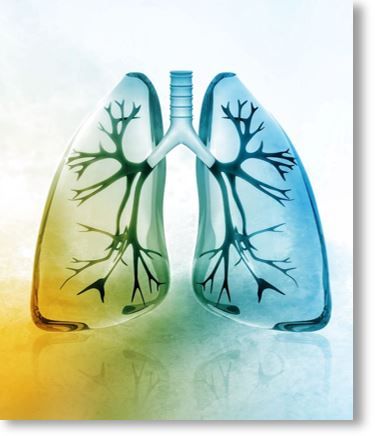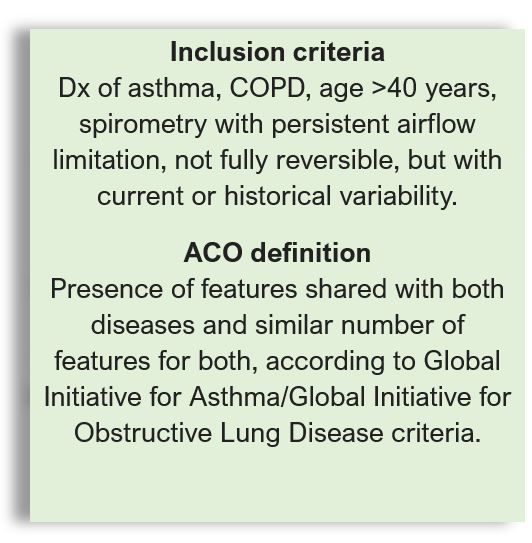Pulmonary Rehab Improves Lung Function, QOL in Asthma-COPD Overlap Plus Obesity
Asthma-COPD overlap and obesity mutually exacerbate each other and an early program of pulmonary rehabilitation shows promise to help both.
©hywards/adobe stock

In patients with comorbid asthma, chronic obstructive pulmonary disease (COPD), and obesity, early participation in a program of pulmonary rehabilitation (PR) significantly improved several measures of pulmonary function as well as key indicators of health-related qualify of life.
The study findings were reported recently in the Journal of Medicine and Life by a team of researchers at Bukovinian State Medical University, Chernivtsi, Ukraine.
Asthma-COPD overlap (ACO) is an increasingly recognized clinical entity, say study authors, and is associated with more-- and more severe--symptoms than either respiratory disease alone and with a higher mortality rate. The role of comorbid conditions to respiratory disease severity also is gaining attention, they continue, with obesity being one of the most common factors leading to pulmonary dysfunction.
The authors note that PR is widely accepted as “the most effective nonpharmacologic” intervention for chronic respiratory disease but they point to a gap in understanding of the efficacy of the modality in patients with ACO stratified by overweight or obesity.
The investigators, led by Olha Huivaniuk, recruited 40 patients with ACO who were admitted to hospital for respiratory exacerbation. Mean (SD) age was 64.86 (9.81) years. After baseline assessment participants were assigned by body mass index (BMI) to 1 of 3 groups: normal (BMI=18.5–24.9 kg/m2, n=13) overweight (BMI<25–29.9, n=13), and obese (BMI≥30, n=14). Participants were further divided into the PR group which included 7 patients from each group (total n=21). The effectiveness of the PR intervention was compared against the the control group (n=19).
The study was conducted from October 15, 2018, to February 10, 2020. Participants were all previously treated with long-acting bronchodilators with inhaled corticosteroids. Investigators excluded patients with clinically significant orthopedic or cognitive impairment, previous history of thoracic surgical intervention, myocardial infarction, unstable cardiovascular disease, BMI<18.5, or severe renal impairment.

Baseline demographics and clinical characteristics between the PR and control group were not significantly different, according to the study.
The questionnaires used to assess pre-intervention symptom level were the COPD Assessment Test (CAT), the Asthma Control Test (ACT), and the modified Medical Research Council dyspnea scale (mMRC). Huivaniuk and colleagues evaluated effectiveness of the PR program using the BODE (body mass index, forced expiratory volume in 1 second (FEV1), dyspnea, and 6-minute walking test [6MWT]) index.
Measurements were performed before and after the PR program which ran for 6 months and consisted combined strength and endurance training (5x/week for 30 mins), education, breathing techniques, psychological consulting, and nutritional support for participants with obesity.
Baseline measures and change
According to the study, baseline FEV1 was lower in patients with normal BMI vs those with overweight and obesity but the difference was not significant. Patients in the overweight group had the lowest baseline mMRC status (dyspnea) vs the normal and obese groups. The normal and overweight groups at baseline showed no significant difference in ACQ-5 score but it was higher among those in the obese group. Exercise capacity before the PR intervention was significantly lower in participants with obesity and there were no significant between group differences in the BODE index.
After 6 months of PR, the BODE index score decreased in each group but was significantly lower in patients in the overweight group (decrease of 43.6% vs baseline and 40.7% lower than see in the control group). Dyspnea mMRC scale scores decreased by 39.5% in the obese group and 45% in the overweight group (p=.001). 6MWT scores significantly increased across BMI groups vs the control group (p<.001)
Total CAT scores also decreased by 25.4% and 31.2% in the obese and overweight groups, respectively (p<.001). BMI decreased among obese participants by 9.4% from baseline. Percentage of body fat and visceral fat level decreased by 13.6% and 19.7%, respectively, in patients in the obese group. FEV1 increased slightly after the PR program in the 3 BMI groups (5.1%, overweight; 6.1%, obese; 4.2%, normal BMI).
The authors acknowledge several study limitations including the small size of the cohort and short interval of the intervention which curtailed their ability to assess optimal duration of the PR program. They call for future research that will investigate the effect of long-term PR in the vulnerable ACO population, particularly as more evidence accumulates for the impact of precision medicine.
Reference: Huivaniuk O, Stupnytska H, Fediv O, Bocharov A. The effectiveness of short-term pulmonary rehabilitation program in patients with comorbid asthma, chronic obstructive pulmonary disease and obesity. J Med Life. 2022;15:196–201. doi: 10.25122/jml-2021-0050